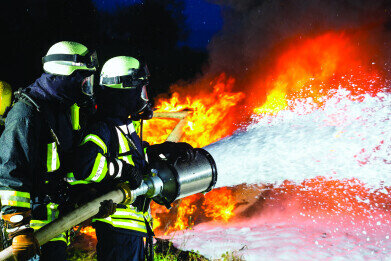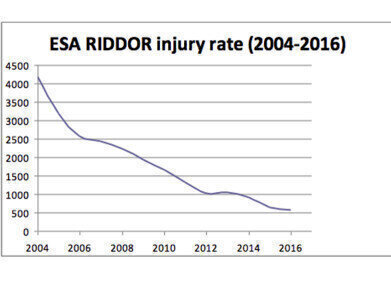Safety clothing
How safe is PFAS-free firefighting equipment?
Apr 06 2024
After years of firefighters campaigning against the use of PFAS in their protective clothing, Armadillo Merino USA has recently unveiled a pioneering collection of station wear and personal protective equipment (PPE) that is devoid of PFAS, heavy metals, and toxins. This innovative lineup, crafted entirely from Merino wool, marks a pivotal shift in the firefighting industry, aiming to mitigate health risks associated with hazardous substances.
The SABER collection, encompassing shirts, pants, socks, wildland balaclavas, and neck gaiters, is designed from 100% Merino wool, a material renowned for its moisture-wicking properties. This ensures firefighters remain dry and comfortable in the line of duty. The balaclava and gaiter are further enhanced with P2 filters, offering additional protection.
Notably, the station shirts are available in both short and long sleeves, catering to varied preferences and requirements. They are designed with optional features such as epaulets and badge holders, adding to their functionality. The EPIC socks, comprising 75% Merino Wool, blend durability with comfort, featuring comprehensive padding suited for rigorous use.
The introduction of PFAS-free firefighting gear by Armadillo Merino is not only a testament to the brand's commitment to safety but also underscores a growing awareness within the firefighting community about the potential dangers of PFAS-containing products.
Per- and polyfluoroalkyl substances (PFAS) have long been integral to firefighting foams, valued for their ability to rapidly extinguish fuel fires. However, the environmental and health repercussions of these substances have become increasingly apparent. Dubbed 'forever chemicals' due to their persistent nature, PFAS compounds have been linked to a range of health concerns, including cancer, hormonal imbalances, and compromised immune systems.
Recognizing these risks, the firefighting community is gradually shifting towards PFAS-free alternatives. This transition is driven by increasing regulatory pressures, environmental concerns, and the pursuit of safer working conditions for firefighters. Despite these advancements, the search for equally effective but safer alternatives poses significant challenges.
The move away from PFAS-containing firefighting foams is a complex journey. Early PFAS-free formulations struggled to match the performance of their predecessors, sparking intensive research and development efforts. Companies like National Foam have been at the forefront of this transition, striving to create fluorine-free foams that satisfy environmental and performance criteria without introducing new risks.
The shift towards PFAS-free gear, as demonstrated by Armadillo Merino's latest offerings, is part of a broader effort to ensure firefighter safety and environmental protection. The challenge lies in avoiding 'regrettable substitutions,' where one hazardous substance is replaced with another of equal or greater concern. This underscores the importance of thorough evaluation and regulation to prevent unintended consequences.
Recent studies, including one from North Carolina State University, highlight the performance trade-offs associated with PFAS-free turnout gear. While PFAS-free options excel in water-repellence, they may lack oil repellence, posing additional risks. Such findings emphasize the need for continuous innovation and testing to optimize the safety and efficacy of firefighting equipment.
Digital Edition
IET 35.2 March
April 2025
Air Monitoring - Probe Sampling in Hazardous Areas Under Extreme Conditions - New, Game-Changing Sensor for Methane Emissions - Blue Sky Thinking: a 50-year Retrospective on Technological Prog...
View all digital editions
Events
Apr 29 2025 Edmonton, AB, Canada
May 06 2025 Nuremberg, Germany
May 10 2025 Karachi, Pakistan
May 11 2025 Vienna, Austria
May 11 2025 Seoul, South Korea













_(4427399123)-(2).jpg)





